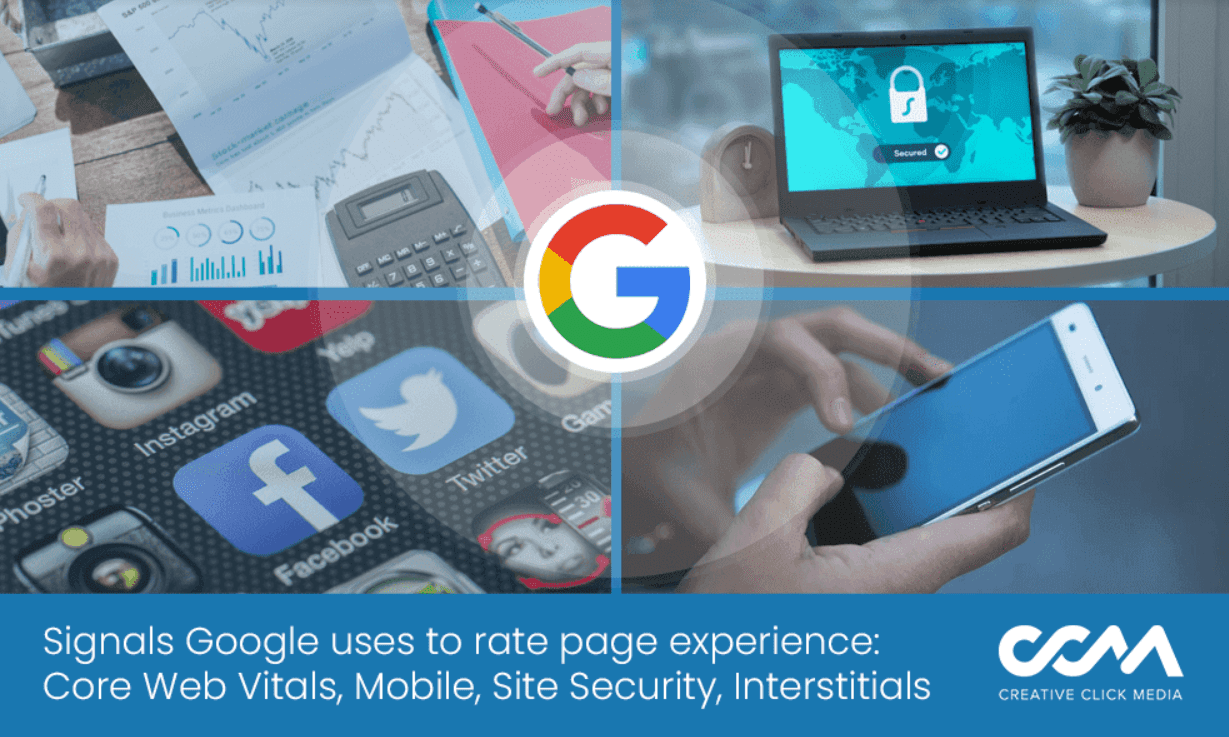It is safe to say that every business resolves to do better and generate more revenue in the new year. However, in today’s highly competitive digital marketplace, that can be tough, especially on the local level. There are so many local SEO ranking factors to consider, and while some remain constant, new ones continue to evolve. Some small business owners have been successful in the past without paying too much attention to local SEO, but those days are over.
To compete on the local level, you need to have your business not only show up on page one of a local search, but in Google’s local three-pack if possible. Let’s look at the local SEO ranking factors and how to ensure you understand and incorporate them into your SEO efforts to make 2022 the successful business year you planned.
Start With Your Google Business Profile
Of all the local SEO ranking factors, one of the most important is your Google My Business (GMB) listing, soon to be Google Business Profile (GBP). It is vital that it’s accurate, up-to-date, and complete. We will explain why, but first, it is important to understand Google’s reasoning behind the name change.
The transition is an effort to move business profile management out of the Google My Business app and directly into Google Search, Google Maps, and those respective apps. At some point in 2022, Google will retire GMB altogether. As GBP will focus primarily on multiple listing businesses, Google encourages single listing businesses to claim or verify their business listing through Google Search or Google Maps. Google says they will “share more details on these changes in the months ahead.”
Multiple listing businesses will transition from GMB to GBP with the rebrand which continues to evolve. Single listing businesses should search their business in Google Search or Maps and manage their business profile from there.
In addition to making sure your business profile is accurate and up to date, you can engage with your audience with Google posts, add images to your profile, and access information about listing views and performance.
So, let’s circle back to why your Google listing is so important.
For starters, when users search for your business, your GBP listing is the first thing they see. An incomplete listing without business hours, contact information, and a service or product overview won’t make a great first impression. Not only will a complete listing put your best foot forward with users, but it will also impress Google and help improve your local SEO ranking.
Your GBP listing integrates with Google Maps, making it easier for users to get directions and find your business. The listing also offers direct messaging to your business phone or email. Reviews can also be displayed on it. Google even allows you to include a 750 character description of your business. Your GBP can enable visitors to learn everything they need to know about your business all in one place. In light of the recent pandemic, the ability to continually update business hours and other business information has been invaluable
New features Google plans to roll out along with the transition are call history, messaging directly from Google Search, and a performance planner.
Click-Through Rate
It only stands to reason that if users get all the information they need about your business from your Google Business Profile, they might not click through to your website. Hopefully, this means that they found out all they need to know and are getting in the car to drive to your location.
According to a SearchEngine Journal article, there is no compelling evidence to support the idea that Google uses your click-through rate (CTR) as a direct search ranking signal. Others cite CTR as one of the behavioral signals Google’s algorithm uses to determine local SEO ranking. Google’s local SEO ranking factors are a mystery that is constantly unraveling, but if there is a possibility the CTR matters for SEO, it’s worth paying attention to.
A Brightlocal survey revealed that while 32% of consumers believe Google My Business has the most accurate information, 56% expect local business websites to have the most accurate contact information. Although that 56% is over half, and they may be clicking through to your website, the more consumers that click through, the better chance you have of increasing conversions.
Whether the click-through rate is one of Google’s local SEO ranking factors or not, getting more traffic to your website is important. The steps you take to do that can also help improve your rankings. These, no doubt, have you wondering how to increase your website traffic.
Keywords
Although increased website traffic won’t directly influence your SEO, it can significantly impact how your website appears in search results. Most local searches are “near me” searches or include the name of a specific geographical location. According to HubSpot, nearly 46% of all Google searches are seeking local information. When optimizing your website, it is crucial to use keywords or phrases specific to your business and its location or service area. You need to identify the best keywords and use them in your domain page titles, headers, and content. They also need to be included in meta descriptions.
Be sure to use a unique keyword or phrase for each page or post on your site. If you use the same keyword in two locations, they will be competing against each other. This is known as keyword cannibalization and can have a negative effect on your SEO.
Voice Search
Among the key voice search statistics in a recent Findstack article, 71% of consumers prefer to conduct queries by voice instead of typing. This means the impact of voice search on keyword selection can’t be ignored. People talk differently than they type. Text search tends to be more succinct with phases containing just one or two words. Voice search typically includes more detail, creating the need to consider long-tail keywords that match the way people speak. Long-tail keywords also have a higher search intent.
For example, someone looking to market their business on Facebook might text search “Facebook marketing ideas.” Whereas with voice search, the query might be “How can I market my business on Facebook?”
Using long-tail keywords focused on how people use voice search is extremely important for eCommerce websites. A site that sells different brands of jeans won’t benefit much from the keyword “jeans”. General searches such as this usually represent a consumer at the beginning of their buyer journey. A search for “women’s Lee boot-cut jeans” represents a consumer who is ready to make a purchase.
Although the use of voice assistant devices has increased, mobile continues to dominate when it comes to voice search. With people searching for business while on the go, voice search is often locally focused. It is important to optimize your website for voice search to rank high in local search results.
 Content
Content
Another one of the local SEO ranking factors is content. Content provides Google with the information needed to index your website pages. If your website doesn’t have enough content, it won’t be indexed by Google and will be impossible for users to find.
Create content that users will find interesting or valuable, and that answers a question or solves a problem. Your content should also include the appropriate keyword in the title and headers throughout the body of the content. It is also important to consistently update or create new content. If users find the content on your site out-of-date, they will quickly leave in search of a more current site.
When a visitor lands on your site and quickly leaves without exploring other pages, this is considered a “bounce” by Google. Your bounce rate is also one of the local SEO ranking factors. The bounce rate is the number of users that enter and leave your site from the same page without clicking on any other pages.
So, how do you determine your bounce rate?
Your bounce rate is calculated by dividing the number of single-page visits by the total number of visits to your site. Let’s say that on one specific day, they were 350 visits to your website, and 175 of those users bounced. Your bounce rate for that day would be 50%. According to Semrush, an ideal bounce rate would be between 26% to 40%, and 41% to 55% would be considered an average bounce rate. Anything above that is considered high.
A high bounce rate normally indicates one of two things. Either you’re ranking for keywords that aren’t relevant to your website or your site doesn’t have enough relevant content. If your bounce rate is high, your ranking will go down. However, if they stay on your site and click on other pages, this signals to Google that your site is relevant and authoritative. These are qualities that can increase your ranking.
User Experience
Once a user visits your website, the content isn’t the only thing to keep them there.
A positive user experience is necessary to engage users and prolong their session. This includes the ease of navigation, page load times, and finding the information they want.
Google initially announced in 2020 that page experience would become one of the SEO ranking factors. The rollout for mobile was complete in August of 2021. The rollout for desktop is slated to begin in February 2022 and be completed by March 2022. There are signals Google uses to rate page experience.
First, there are the core web vitals. These include loading performance, input inactivity, and visual stability. The load time for any page should be no more than 2.5 seconds, and the length of inactivity should be less than 100 milliseconds. Cumulative Layout Shift (CLS) measures visual stability, and the CLS score should be less than 0.1. What this means is how often users experience unexpected layout shifts. For example, have you ever tried to click on a button, and the page shifted, taking you to something other than what you wanted? If so, you can bet that page had a higher CLS score than 0.1.
The second signal is mobile. A recent 2021 Hubspot article stated that “Google controls a little more than 92% of the search engine market share worldwide. That includes 72% of the desktop market and 92% of the mobile search engine market.” With 92% of Google searches performed on mobile, it’s vital to optimize your website for these devices. Your GBP and your website should also feature a click to call button, making it simple for users to contact you.
The third is site security, another one of the local SEO ranking factors you need to keep in mind. While some business owners think an SSL certificate isn’t a necessary investment, the lack of HTTPS clearly displayed at the beginning of your website URL will not only be a strike against you with Google but will also discourage users from visiting your site.
And last but not least is the presence of interstitials. An interstitial is an expected page or pop-up that interferes with the user getting to the information they were searching for on your site. These are typically advertisements delivered by ad servers and should not be confused with prompts for cookie consent. If you’ve ever visited a site and had to X-out of one or more ads to get to the page you originally clicked on, you understand how interstitials can diminish the user experience.
Google has also stated they plan to update page experience signals annually. It no longer matters what device your audience uses to find you. User experience can’t be overlooked as one of the local SEO ranking factors.
 Online Reviews
Online Reviews
Google has also stated they plan to update page experience signals annually. It no longer matters what device your audience uses to find you. User experience can’t be overlooked as one of the local SEO ranking factors.
You should always encourage satisfied customers to leave reviews. Google’s priority when providing search results is the user. That said, businesses with positive reviews will rank higher in local search results.
In addition to being viewed favorably by Google, online reviews carry a lot of weight with your audience. They can have a significant influence on purchase making decisions. Multiple positive reviews can tip the scales in your favor with consumers.
But what should you do if you receive a negative online review?
You should first acknowledge the issue and apologize. Do your best to make the individual feel that you understand and will do your best to rectify the issue while tactfully representing your business in a positive light. Be genuine and sincere in your response. Once you’ve engaged the individual, take the discussion offline by inviting them to call or email you to reach an agreeable solution. Once the situation has been resolved, encourage satisfied customers to leave reviews. This can help minimize the effect of the negative review and show that good customer service is what your business normally provides.
Directories and Citations
For those old enough to remember the Yellow Pages at the back of the phone book, online directories and citations are the modern-day equivalents. Citations are your business name, address, and phone number (NAP) that appear either in your website copy or in online directories. There are literally hundreds of directories. You want your NAP to be accurate and consistent across each platform for multiple reasons.
The first reason is to make it easy for people to find you. If your NAP information is inaccurate or inconsistent, it can result in frustration and confusion and end up driving potential consumers to your competition. The second is to allow Google and other search engines to verify your necessary business information. The information is stored and is one of the local SEO ranking factors to determine your ranking in a local search. You should also include a link to your website, a description of your business, and images to give users a better understanding of what your business offers.
Backlinks and Authority
Your website authority is also one of the key local SEO ranking factors. Google’s goal is to provide users with the most reliable information and results possible. The more authoritative your website is, the better chance you have to rank higher in search engine results for your targeted keywords and attract more customers.
One of the best ways to help build your website authority is through backlinks. These are links from other websites that link to yours. So, you’re probably thinking: the more backlinks your website has, the better. Well, yes and no.
Gaining backlinks to increase your authority is all about quality, not quantity.
You want to gain backlinks from other sites relevant to your industry and viewed by Google as highly authoritative. You can do this by linking to these types of sites in your blog copy. However, make sure you are producing high-value content. Otherwise, there will be no reason for authoritative sites to link to your site. You can also gain backlinks by writing reviews or testimonials for other companies in the industry you do business with, or offering to write guest content.
Ready to Implement These Local SEO Ranking Factors?
Yes. Maybe. Not really sure where to begin? We get it. SEO can be overwhelming for the average business owner. While boosting your SEO yourself is possible even if you’re not very tech-savvy, don’t you have enough on your plate already? Most business owners are already juggling numerous responsibilities without adding SEO to the mix.
Considering the importance of SEO, wouldn’t it be best to leave it to the professionals? Contact the team at Creative Click Media and let us show you how we can improve your local SEO ranking.




